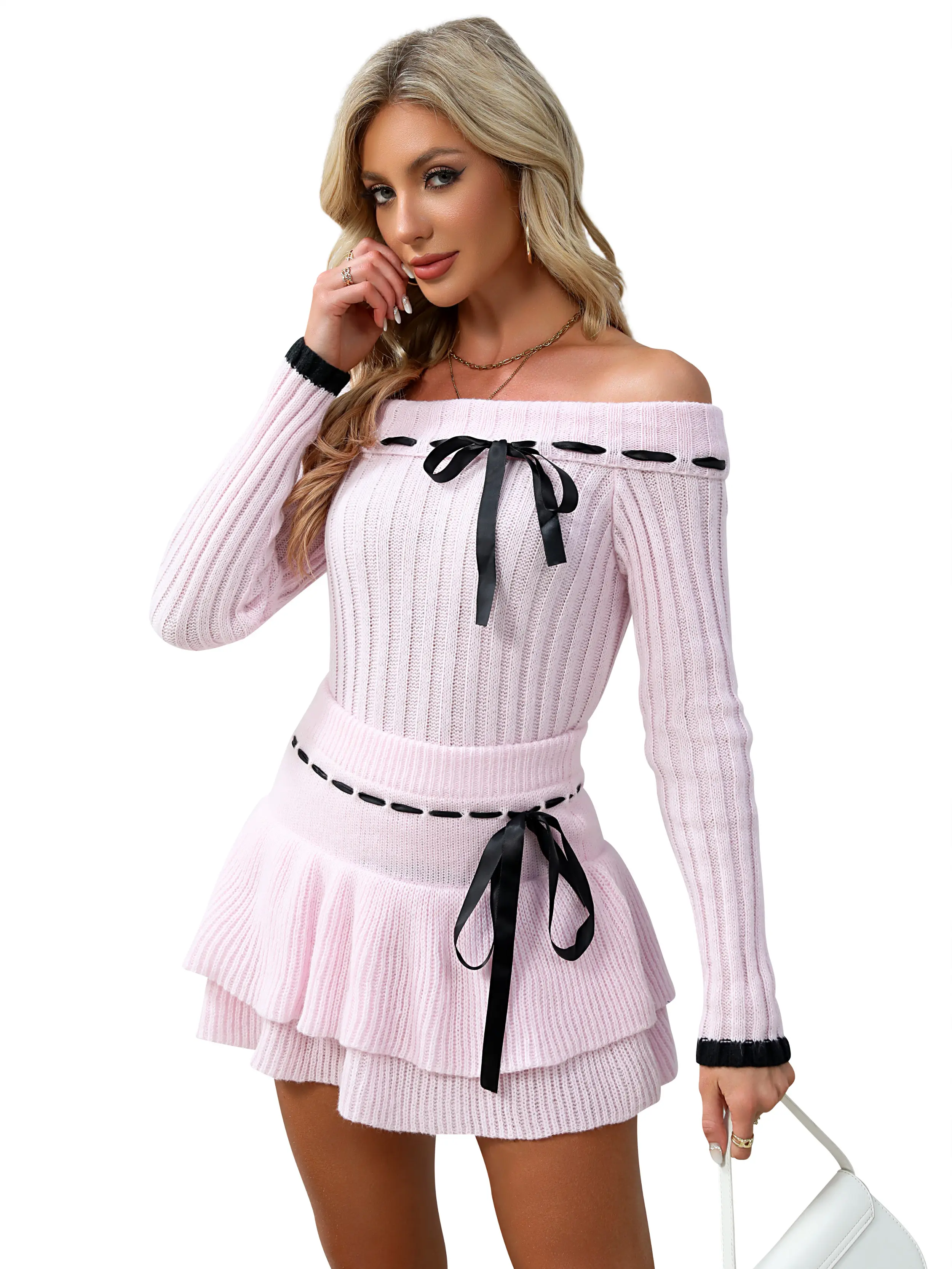The Difference in A-Line vs. Straight Cut Knit Skirts
A-line and straight cut knit skirts offer distinct silhouettes that cater to various body types and occasions. A-line skirts, characterized by a fitted waist that flares out towards the hem, are particularly flattering for hourglass figures, creating a harmonious balance between the torso and hips. Straight cut skirts, on the other hand, feature a consistent width throughout the silhouette, which can elongate the leg line and suit tall women, providing a sleek and modern appearance. The choice between the two depends significantly on the desired visual effect and body shape.
Fabric Choices for Knit Skirts: A Comprehensive Look
Fabric choices for knit skirts play a crucial role in enhancing their aesthetic appeal and ensuring comfort and functionality. For A-line skirts, silk blends, crepe, modal, and viscose are favored for their smooth drape and elegant look. Silk and crepe are particularly luxurious, enhancing the flattering silhouette. Sustainable options such as organic cotton, Tencel, and recycled polyester offer similar draping qualities, aligning with eco-conscious design principles. For straight cut skirts, four-way stretch jerseys, cotton, and linen are popular for their structure and comfort. Textured finishes, such as matte or reflective surfaces, can elevate the style factor and versatility, making them suitable for various occasions. The weave type and surface finish also significantly impact the overall performance and appearance, with specific patterns and textures enhancing comfort and visual appeal. By carefully selecting the right materials and techniques, designers can cater to a wide range of client preferences, from formal ensembles to everyday wear, ensuring both style and sustainability.

Design Elements of Women's Knit Skirts
Design elements in women's knit skirts play a crucial role in defining their silhouette and functionality. A-line skirts, with their characteristic gathering from the hips to the hem, offer a smooth flow that enhances the wearer's curves and adds dynamic movement. In contrast, straight-cut skirts provide a modern and sophisticated aesthetic due to their clean lines and focus on femininity. Seasonal and sustainable considerations further diversify their appeal; lighter fabrics like cotton jersey or Tencel enhance freshness for spring, while richer materials like velvet or wool offer warmth and elegance for fall. Colors and prints significantly influence seasonal appropriateness; pastels with delicate florals or light stripes bring cheer to spring, while deep autumnal tones and earthy prints complement rich fabrics in fall. Finishing techniques such as gathering, pleating, and precise hemming create additional texture and movement, providing designers with tools to refine and enhance the essential aesthetics of A-line and straight cut knit skirts.
Image Size and Flow in Knit Skirts: Creating the Right Visual Impact
When designing knit skirts, the visual impact of image size and flow is crucial in defining the overall aesthetic. For A-line skirts, incorporating varied textures and rich colors can create a striking visual effect, enhancing the voluminous shape and drawing attention to the wearer's silhouette. In contrast, straight-cut skirts can benefit from smoother, drapey materials that flow gracefully, creating a clean, streamlined look. Careful selection of yarn types and knitting techniques is essential to ensure that the skirt complements the intended style while achieving the desired visual and tactile experience.
Trends in Women's Knit Skirts: Present and Future
In recent seasons, there has been a noticeable shift towards more comfortable and versatile knit skirts, with both A-line and straight cut styles gaining significant popularity. A-line skirts are particularly favored for their flattering, classic silhouette, which enhances a variety of body types while offering a softer, more feminine look. Straight cut skirts are gaining traction for their modern and sleek aesthetic, making them suitable for formal and professional settings. The future trends in women's knit skirts may see an increase in hybrid designs that blend elements of both styles, providing greater flexibility and versatility. Sustainability and ethical practices will play a crucial role in design and production, with a focus on eco-friendly materials such as Tencel and recycled yarns. Innovations in knitting technologies, such as 3D knitting and multifunctional features, are likely to enhance the functionality and appeal of sustainable hybrid knit skirts.
Eco-Friendly Practices in Knit Skirt Manufacturing
Eco-friendly practices in knit skirt manufacturing are becoming increasingly important as consumers demand more sustainable fashion options. Using organic cotton and Tencel significantly reduces the environmental impact by lowering water usage and chemical pollution. Designers are also exploring innovative materials like regenerated polyester to maintain performance while reducing plastic waste. The design process requires adjustments to ensure the perfect fit and aesthetic appeal, which may include modifications in drape and fabric manipulation. Optimizing the manufacturing process through techniques like zero-waste cutting and energy-efficient processing further minimizes waste and improves sustainability. The use of low-impact dyes and potentially waterless dyeing methods serves to reduce water consumption and chemical usage, enhancing both environmental and production efficiencies. Sustainable packaging solutions, such as biodegradable or compostable materials, and reusable packaging, help to further reduce waste. Transparency in the supply chain and a shift towards local sourcing support ethical practices and reduce the carbon footprint associated with transportation. Leveraging technology, particularly blockchain and IoT, can provide better traceability and optimize production processes. Engaging consumers through apps and platforms that inform them about the environmental impact of their purchases and provide educational content on sustainable living can foster a more eco-conscious consumer base.
Consumer Preferences and Market Trends
Consumer preferences for A-line versus straight cut knit skirts are influenced by a range of factors, including the flattering silhouette and modern appeal of the respective styles. A-line skirts have gained popularity for their ability to accentuate the waist and create a flared silhouette, appealing to those seeking a more traditional and elegant look. Straight cut skirts are favored for their minimalist design and versatile use in various outfits and occasions, catering to those who prefer contemporary and casual styles. Recent market trends suggest that sustainability is also playing a significant role in consumer choices. A-line skirts require more fabric, often making them more resource-intensive compared to straight cut versions. As a result, consumers increasingly opt for brands that prioritize ethical production and use sustainable materials, driving the shift towards more eco-friendly fashion choices. This trend highlights the growing importance of personal style, body type, and social media influence in guiding consumer preferences, as well as the need for effective influencer marketing strategies that emphasize sustainability and ethical practices.
 Whatsapp us
Whatsapp us
